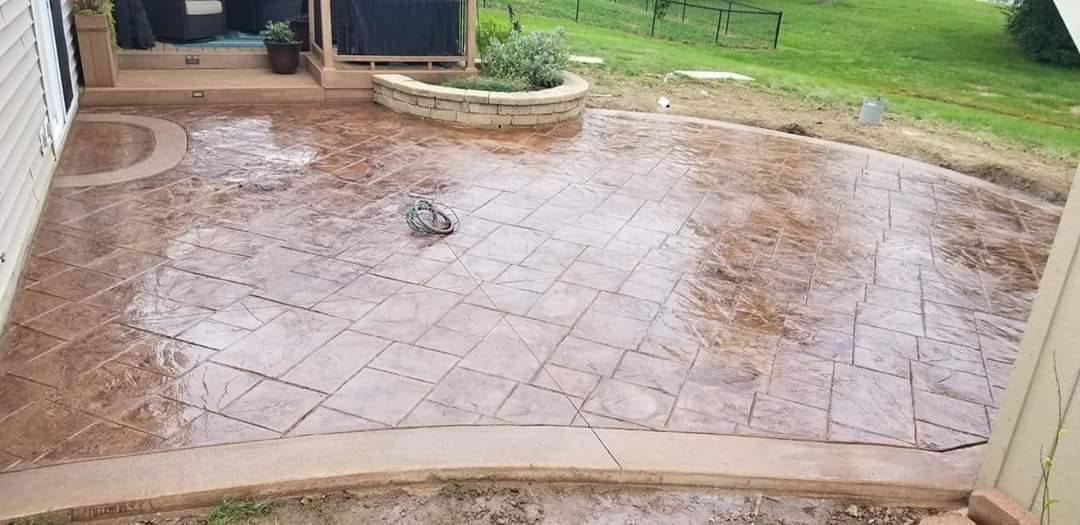As the grass begins to green and the birds begin to chirp we know that spring is near. Spring is the time we begin to venture outside with aspirations of freshening up our lawns and landscaping after the long winter months. Spring is also the time to see what effects, if any, the winter had on our concrete. Concrete of any age can be susceptible to damage from freeze and thaw as well as de-icing chemicals. Pop-outs and scaling are two types of surface defects that are most common and both are a result of winter conditions, and Shelby Materials in Central Indiana can help you prevent this type of damage.
What is a concrete pop-out?
Pop-outs are usually up to one inch in diameter and will most likely have a piece of aggregate (rock) visible in the bottom of the surface void. A pop-out happens when a piece of aggregate lying just below the surface of the concrete absorbs water and freezes. When the piece of gravel or stone is saturated with water and freezes, the water has no place to expand which results in the rock fracturing. After the fracture, the top piece of aggregate is lifted and removed from the concrete taking the thin layer of paste or surface area with it. This leaves a small hole in the surface with the telling sign of the bottom piece of aggregate remaining in the concrete.
What is scaling damage?
Scaling is often more widespread than pop-outs but is not as deep into the surface. Scaling typically only affects the surface mortar layer and does not get deep enough to show aggregate. Scaling is often the result of a soft porous concrete surface. Concrete can have a soft porous surface due to the addition of water to the surface while finishing or the introduction of water to the surface from wetted finish tools. Improper or lack of curing can also lead to scaling issues. Water added to the surface in the form of rain or snow at any time prior to the concrete reaching 3,500 psi can also cause scaling.
How can I prevent damage this spring?
There are a few ways to greatly reduce the chances of pop-outs and scaling. Pouring a reasonable slump is the first way to help reduce freeze and thaw damage. Depending on the type of mix used, a 4- to 6-inch slump is generally recommended. Using proper curing methods is also very important for achieving a dense durable surface. Maintaining your concrete with a quality penetrating sealer will provide your concrete surface with a great layer of protection.
Penetrating sealers should be applied in the fall and will soak into the porous concrete and fill the voids preventing both water and salt from entering the surface. This will minimize the damage that both can do to concrete. After drying, quality penetrating sealers will not change the color of the concrete but will become very apparent during rain or when water is applied to the concrete. Properly treated concrete will reject water and continue to look dry even when water is on the surface. Water will bead and run off similar to water on a freshly waxed car.
Prevent damage with the help of Shelby
Please contact Shelby Materials when planning a concrete project and let your local representative help you select a quality concrete finisher. Also, contact your local Shelby Materials office after the job is complete and let them set you up with the appropriate penetrating sealer so your concrete investment can look and perform as planned for years to come.




